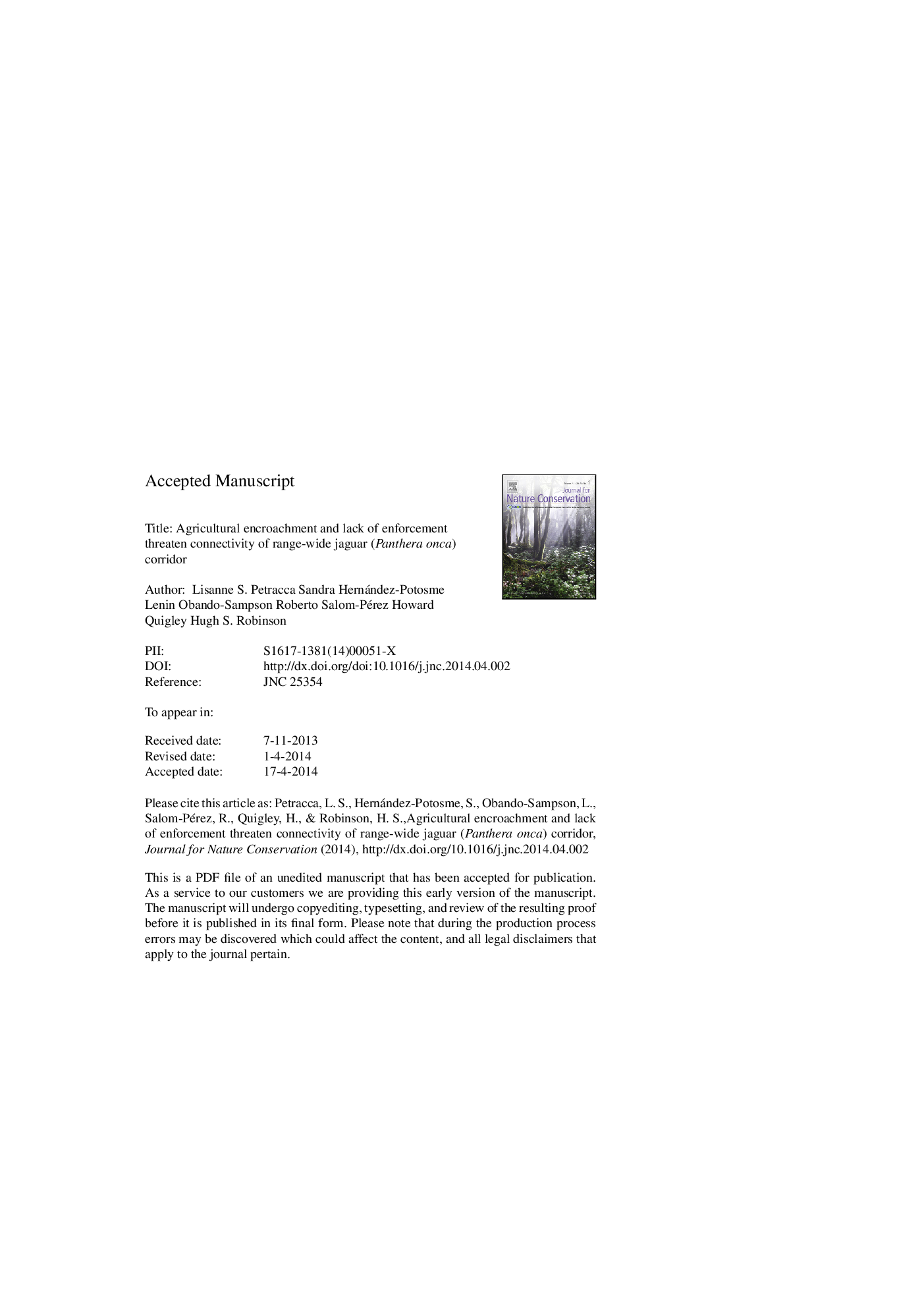| Article ID | Journal | Published Year | Pages | File Type |
|---|---|---|---|---|
| 6305462 | Journal for Nature Conservation | 2014 | 33 Pages |
Abstract
The purpose of protected areas is to safeguard natural habitats and their biodiversity. However, few protected areas are large enough for the long-term conservation of resident species, making the landscapes surrounding protected areas equally important for species conservation. This is especially true for wide-ranging carnivores such as the jaguar (Panthera onca), for which conservation strategies stress the maintenance of range-wide habitat connectivity via protected areas and dispersal corridors. We used 587 interviews with local people in 441 36-km2 sampling units to assess the presence of jaguar and six prey species in a critical corridor in Central America, linking Bosawas Biosphere Reserve and Wawashan Nature Reserve in Nicaragua. We analyzed these data using single-season false-positive detection models in a site occupancy framework. We found that agricultural encroachment, particularly pervasive within a protected area, was the main factor limiting the presence of jaguar and three large-bodied prey species: white-lipped peccary (Tayassu pecari), collared peccary (Pecari tajacu), and red brocket deer (Mazama americana). We suggest that improperly-managed protected areas can suffer the loss of apex predators and their prey, thereby jeopardizing range-wide conservation strategies for threatened species.
Related Topics
Physical Sciences and Engineering
Earth and Planetary Sciences
Earth and Planetary Sciences (General)
Authors
Lisanne S. Petracca, Sandra Hernández-Potosme, Lenin Obando-Sampson, Roberto Salom-Pérez, Howard Quigley, Hugh S. Robinson,
